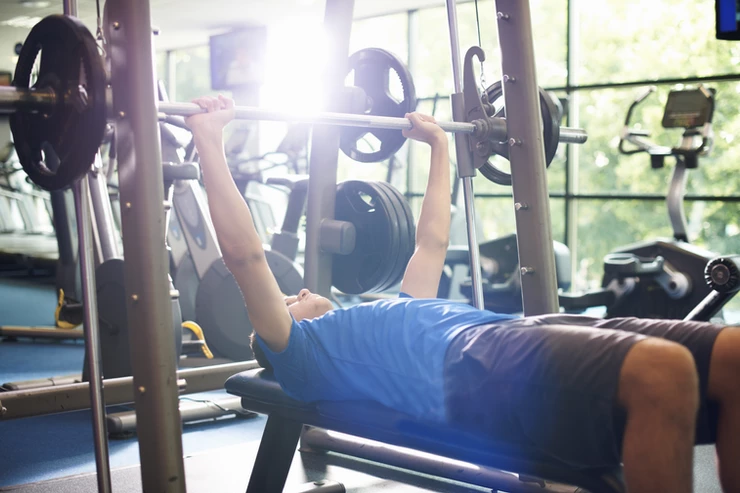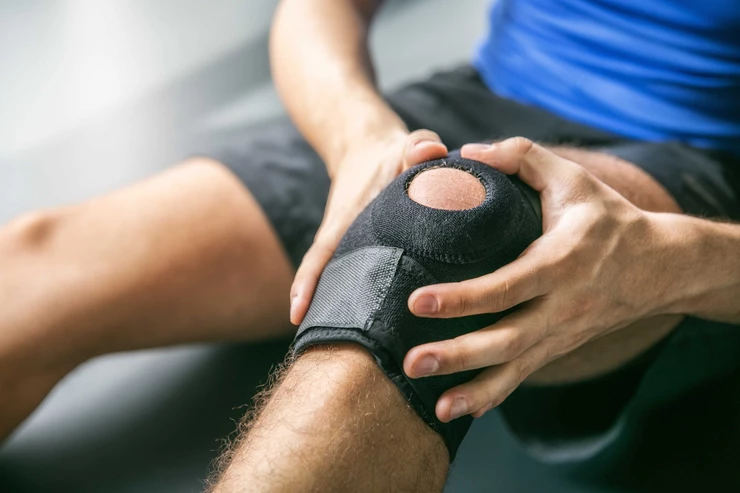When it comes to exercise, many people dive straight into their workouts without giving much thought to warming up. However, a proper warm-up is essential for preparing your body for physical activity and reducing the risk of injury. It primes your muscles, joints, and cardiovascular system, helping you get the most out of your workout while staying safe.
In this blog post, we’ll break down why warming up is crucial, how to structure a good warm-up routine, and why dynamic stretching is more beneficial than static stretching before exercise.
Why Is Warming Up Important?
Warming up is like flipping the “on” switch for your body. It gradually increases your heart rate, improves circulation to your muscles, and raises your body temperature. Here’s why these steps matter:
- Reduces the Risk of Injury: A proper warm-up helps loosen your muscles and improve joint flexibility, reducing the chances of strains, sprains, and other injuries.
- Improves Performance: Warming up helps your muscles work more efficiently, so you can lift heavier, run faster, and move with better coordination.
- Prepares Your Mind: Mentally preparing for exercise is just as important as physically preparing. A warm-up helps you focus and set an intention for your workout, boosting your mental readiness.
Why Dynamic Stretching is Better Than Static Stretching Before Exercise
Dynamic stretching, which involves moving parts of your body through a full range of motion, has been shown to be more effective for preparing your muscles and joints for physical activity than static stretching (holding a stretch in one position). Here’s why:
- Dynamic Stretching Improves Performance
Research consistently shows that dynamic stretching can enhance performance. A study published in the Journal of Strength and Conditioning Research found that athletes who performed dynamic stretches before sprinting had significantly improved running speed compared to those who used static stretches .Dynamic movements like leg swings, walking lunges, and arm circles engage the muscles actively, increasing blood flow, activating the nervous system, and enhancing muscle elasticity. This leads to better overall performance in activities that require speed, strength, and power.
- Dynamic Stretching Increases Muscle Temperature and Blood Flow
Dynamic stretching elevates your heart rate, warms up the muscles, and improves circulation, which prepares your body for intense physical activity. According to the American Council on Exercise (ACE), this type of stretching promotes flexibility and range of motion in a way that closely mimics movements in sports or exercise . These movements allow your muscles to fire more efficiently, preparing them to work at a higher intensity. - Static Stretching Can Decrease Power and Strength
On the other hand, static stretching can temporarily reduce muscle strength and power output. A 2013 review in the Scandinavian Journal of Medicine & Science in Sports found that prolonged static stretching before exercise can reduce muscle performance, particularly in activities requiring explosive power like sprinting or jumping . Holding a stretch for a long duration can make muscles more relaxed and less responsive, which isn’t ideal before strength or speed-based workouts. - Dynamic Stretching Mimics Exercise Movements
Dynamic stretching is movement-based, which makes it more effective for sports and exercises that involve running, jumping, or lifting. By simulating the motions you’ll be performing during your workout, you’re training your body to respond better to the specific demands of your activity. For instance, performing dynamic lunges before a lower body workout prepares your muscles for squatting, running, or jumping by targeting the same muscle groups with similar movement patterns.
How to Structure an Effective Warm-Up
A warm-up should last around 5 to 10 minutes and consist of two key components: general warm-up and dynamic stretching. Here’s how to structure a basic routine.
- Start with Light Cardio (General Warm-Up)
- Begin your warm-up with light, low-intensity cardiovascular exercises. The goal here is to gradually increase your heart rate and get the blood flowing to your muscles.
- Examples:
- Jogging in place or light jogging.
- Jumping jacks.
- Skipping or hopping.
- Cycling on a stationary bike.
Duration: 3-5 minutes.
- Incorporate Dynamic Stretching
- Dynamic stretches are controlled, smooth movements that help improve your range of motion without holding a stretch for a long period. Unlike static stretching (where you hold a position), dynamic stretches keep you moving, which better prepares your body for the activities ahead.
- Examples:
- Leg swings: Stand with your hands on a wall or support. Swing one leg forward and backward, and then side to side. Repeat 10-15 swings per leg.
- Arm circles: Extend your arms out to your sides and make small, controlled circles. Gradually increase the size of the circles. Do 10-15 in each direction.
- Hip circles: Place your hands on your hips and rotate your hips in circles, first clockwise, then counterclockwise. Do 10-15 rotations in each direction.
- Lunges with a twist: Step into a forward lunge and twist your torso toward the front leg, then return to the starting position. Repeat 8-10 times per leg.
Duration: 3-5 minutes.
Specific Warm-Up Exercises Based on Workout Type
The best warm-up routine depends on the type of exercise you’re about to do. Here’s a breakdown of warm-ups for different types of workouts:
- For Strength Training:
- Focus on dynamic movements that mimic the exercises you’ll be doing in your workout. For example, if you’re about to squat or deadlift, include bodyweight squats and hip mobility exercises in your warm-up.
- Examples:
- Bodyweight squats (2 sets of 10).
- Glute bridges (2 sets of 10).
- Bird-Dogs (10-15 reps).
- For Running or Cardio:
- Emphasize lower-body mobility and gradually increase your heart rate. Add movements that mimic the running motion.
- Examples:
- High knees (30 seconds).
- Butt kicks (30 seconds).
- Leg swings (10-15 per leg).
- For Mobility or Yoga:
- Include gentle, flowing movements that help loosen up your joints and get you ready for more extensive stretching.
- Examples:
- Cat-cow stretch (10 reps).
- Downward dog into a plank (5-10 reps).
- Spinal twists while seated (5 per side).
Common Warm-Up Mistakes to Avoid
- Skipping the Warm-Up: Jumping straight into intense exercise can shock your muscles and joints, increasing the risk of injury.
- Holding Static Stretches: Save the static stretches for after your workout, as they can temporarily weaken muscles and decrease performance.
- Warming Up Too Quickly: Rushing through your warm-up won’t give your body enough time to prepare. Take your time, and be mindful of your movements.
- Neglecting Specific Movements: Tailor your warm-up to the workout you’re about to do. For instance, if you’re lifting weights, focus on warming up the muscles you’ll be using in those lifts.
Cooling Down: The Other Half of Your Workout
Just as a warm-up is essential for preparing your body, cooling down is crucial for recovery. After your workout, spend a few minutes doing light cardio and static stretching. This helps gradually lower your heart rate, prevents muscle stiffness, and enhances flexibility.
Conclusion
Research shows that dynamic stretching is the most effective way to prepare your body for exercise, improving performance and reducing injury risk. Avoid static stretching before a workout, as it can reduce muscle power and strength. Instead, spend 5-10 minutes doing a well-structured warm-up with light cardio and dynamic stretches to get the best results from your workout.
Ready to improve your fitness and avoid injury? Start incorporating these warm-up routines into your workouts, and you’ll notice the difference!
References:
- Fletcher, I. M., & Jones, B. (2004). The effect of different warm-up stretch protocols on 20 meter sprint performance in trained rugby union players. Journal of Strength and Conditioning Research, 18(4), 885-888. DOI: 10.1519/00124278-200411000-00035.
- American Council on Exercise (ACE). (2015). Why You Should Warm Up Before Exercising. Retrieved from https://www.acefitness.org/education-and-resources/lifestyle/blog/5676/why-you-should-warm-up-before-exercising/
- Simic, L., Sarabon, N., & Markovic, G. (2013). Does pre-exercise static stretching inhibit maximal muscular performance? A meta-analytical review. Scandinavian Journal of Medicine & Science in Sports, 23(2), 131-148. DOI: 10.1111/j.1600-0838.2012.01444.x.




Leave a comment…